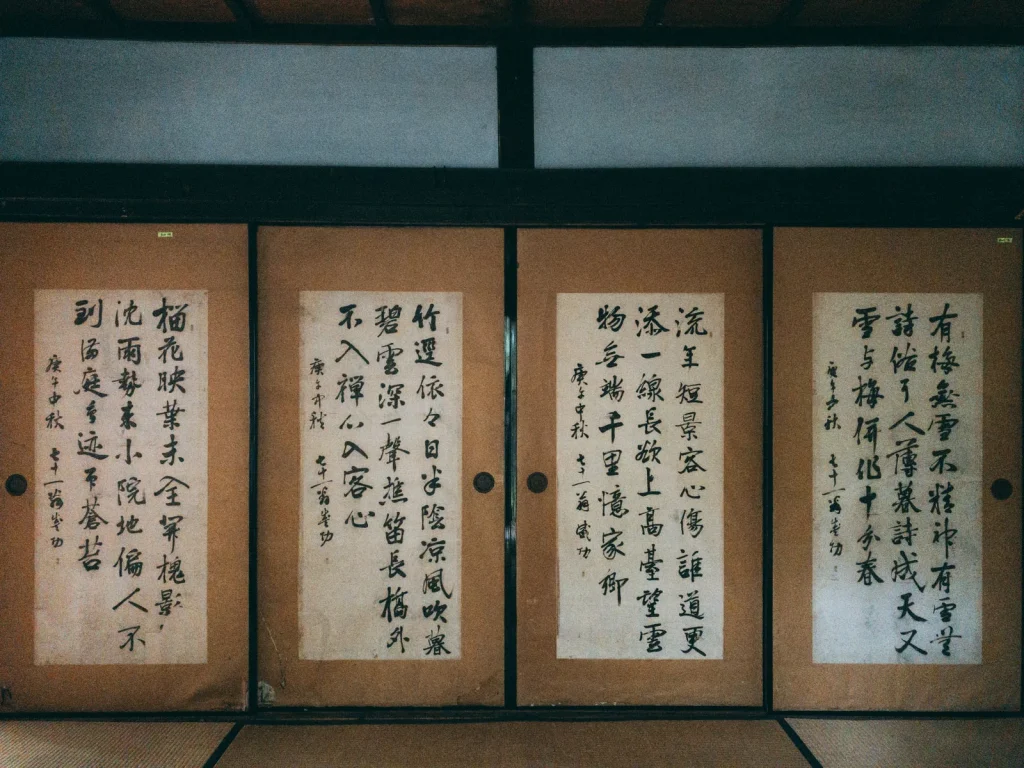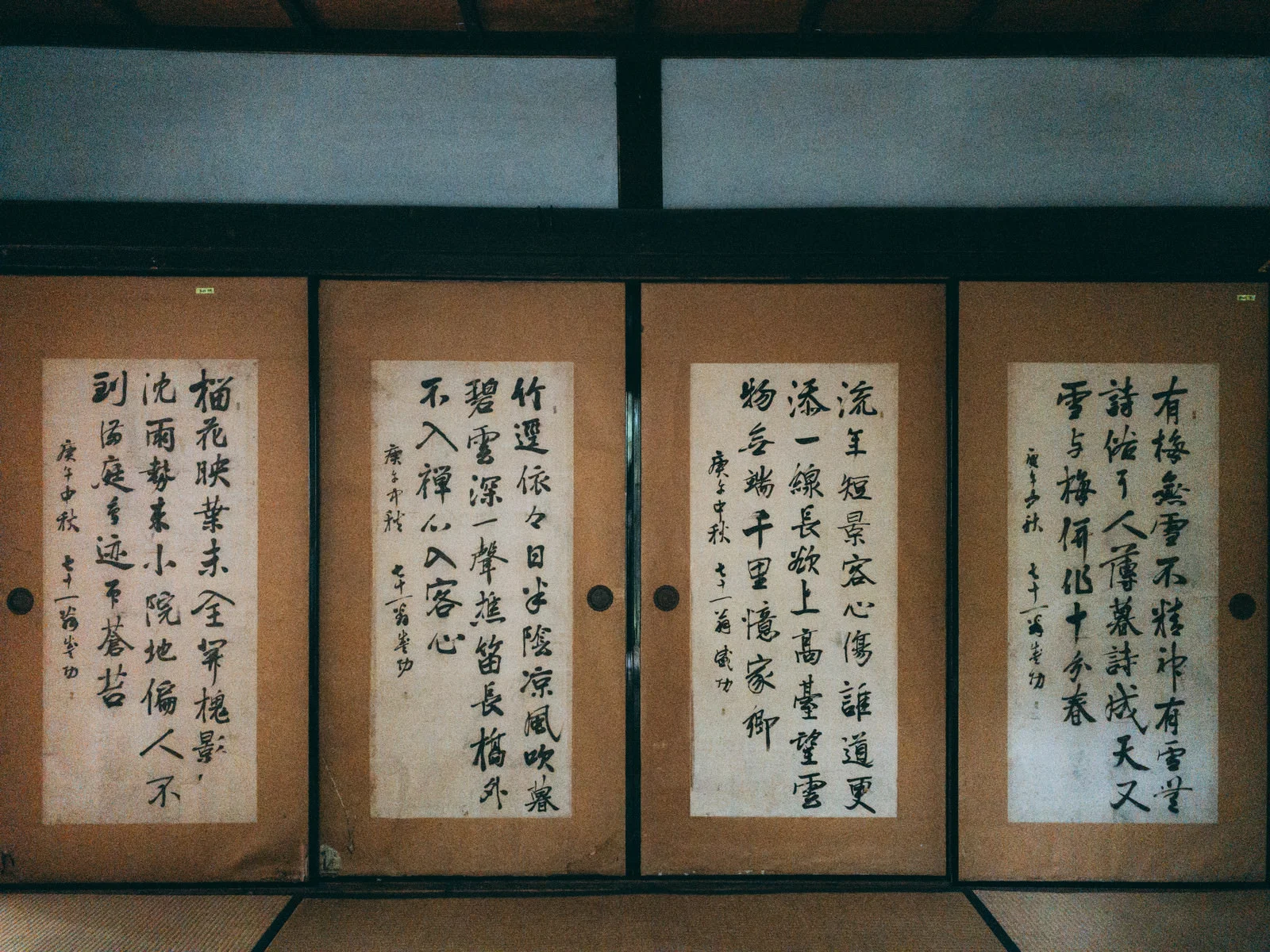Japan’s kanji characters are not just a form of writing; they are a canvas of beauty and meaning that has evolved over thousands of years.
The intricate strokes and profound symbolism make them a unique and integral part of the Japanese language and culture.
In this article, we delve into the realm of cool and beautiful kanji characters, exploring their aesthetic appeal and rich meanings.

1. 愛 (Ai) – Symbol of Love and Affection
The kanji character for “love,” 愛 (ai), embodies both beauty and deep sentiment. With graceful curves that seem to entwine like two hearts, this character symbolizes the warmth that blossoms within one’s heart. Revered as a powerful symbol of connection and the foundation of happy relationships, 愛 is cherished by many for its visual and emotional impact.
2. 龍 (Ryū) – Tradition and Majestic Presence
龍 (ryū), meaning “dragon,” stands as a symbol of tradition and majestic strength. The character’s bold strokes convey a powerful and dignified presence, reflecting the reverence dragons have held in Japanese culture throughout history. Widely utilized in literature, art, and martial arts, 龍 commands attention and captivates with its awe-inspiring aura.
3. 武士 (Bushi) – Pride and Warrior Spirit
The kanji 武士 (bushi), representing “samurai,” exudes an unmistakable coolness. Depicting the spirit of a warrior with pride and poise, this character captures the essence of the samurai code. The disciplined and courageous way of the samurai, as symbolized by 武士, continues to resonate with many, leaving an indelible mark on Japanese culture.
4. 華 (Hana) – Symbol of Beauty and Elegance
華 (hana), meaning “flower” or “beauty,” is a kanji character that evokes a sense of elegance. The graceful strokes resemble the unfolding petals of a flower, capturing the essence of Japan’s appreciation for natural beauty. Widely used to convey the grace and beauty of women, 華 is a harmonious blend of simplicity and aesthetic appeal.
5. 道 (Dō) – Path to Wisdom and Harmony
道 (dō), meaning “path” or “way,” holds a special place in Japanese culture as a symbol of wisdom and harmony. With a simple yet beautiful design, this character signifies the pursuit of the right direction in life. Used in various disciplines such as martial arts, tea ceremony (茶道 – sadō), and flower arrangement (華道 – kadō), 道 encapsulates the Japanese spirit of seeking wisdom and balance.
6. 神 (Kami) – Symbol of the Sacred
神 (kami), meaning “god” or “deity,” is a kanji character that exudes a sense of the sacred. The character’s solemn and majestic design reflects the reverence accorded to divine beings in Shinto, Japan’s indigenous spirituality. Whether found in shrines or associated with festivals, 神 carries an air of mystery and respect.
7. 忍者 (Ninja) – Stealth and Cunning
忍者 (ninja), synonymous with stealth and cunning, is a kanji character that embodies the mysterious world of ninja warriors. The combination of 忍 (nin), meaning “endure” or “conceal,” and 者 (sha), meaning “person,” creates a visually intriguing character that reflects the covert skills and agility of these historical figures.
8. 美 (Bi) – Essence of Beauty
美 (bi), meaning “beauty,” is a kanji character that encapsulates the essence of aesthetics. The balanced and harmonious strokes of this character reflect Japan’s appreciation for beauty in various forms, from art and nature to the graceful movements in traditional arts like dance and calligraphy.
9. 悟り (Satori) – Enlightenment
悟り (satori), meaning “enlightenment” or “awakening,” is a kanji character that signifies a profound spiritual realization. The character’s design mirrors the concept of reaching a higher state of understanding and awareness. Commonly associated with Zen Buddhism, 悟り represents the pursuit of inner wisdom and clarity.
10. 祈り (Inori) – Prayer and Devotion
祈り (inori), meaning “prayer” or “devotion,” is a kanji character that conveys a sense of spiritual connection. The character’s design reflects the act of hands clasped in prayer, creating a visual representation of the sincerity and reverence associated with prayer in Japanese culture.
11. 勇気 (Yūki) – Courage
勇気 (yūki), meaning “courage,” is a kanji character that embodies the strength to face challenges. The character’s composition visually conveys the concept of inner strength, encouraging individuals to confront adversity with bravery and determination.
12. 寿 (Kotobuki) – Longevity and Celebration
寿 (kotobuki), meaning “longevity” or “celebration,” is a kanji character associated with good wishes and joyous occasions. Its elegant design reflects the hope for a long and prosperous life, making it a common element in celebratory messages and decorations.
13. 幸福 (Kōfuku) – Happiness
幸福 (kōfuku), meaning “happiness,” is a kanji character that represents the state of well-being and contentment. The character’s composition conveys a sense of balance and fulfillment, encapsulating the desire for a joyous and prosperous life.
14. 希望 (Kibō) – Hope
希望 (kibō), meaning “hope,” is a kanji character that symbolizes optimism and aspiration. Its visual representation combines the characters for “rare” (希) and “expectation” (望), creating a powerful image that embodies the preciousness of hope and the anticipation of positive outcomes.
15. 勝利 (Shōri) – Victory
勝利 (shōri), meaning “victory,” is a kanji character that signifies triumph and success. The dynamic strokes of the character visually convey the sense of overcoming obstacles and achieving a triumphant outcome.
16. 平和 (Heiwa) – Peace
平和 (heiwa), meaning “peace,” is a kanji character that holds a profound significance, especially in the context of post-war Japan. The character’s balanced design reflects the harmonious state that comes with the absence of conflict, symbolizing the enduring desire for global peace.
17. 帰り (Kaeri) – Return
帰り (kaeri), meaning “return,” is a kanji character associated with the concept of coming back home. Its visually appealing design captures the essence of a journey completed and the joy of returning to a familiar place.
18. 知恵 (Chie) – Wisdom
知恵 (chie), meaning “wisdom,” is a kanji character that represents intellectual insight and knowledge. The character’s composition visually conveys the concept of combining information and experience to attain a deeper understanding.
19. 夢 (Yume) – Dream
夢 (yume), meaning “dream,” is a kanji character that encapsulates the imaginative realm of aspirations and desires. Its flowing design evokes the ethereal nature of dreams, making it a captivating representation of the human spirit’s pursuit of goals and aspirations.
20. 流れ星 (Nagareboshi) – Shooting Star
流れ星 (nagareboshi), meaning “shooting star,” is a kanji phrase that captures the fleeting beauty of celestial phenomena.
Conclusion
The characters for “flow” (流れ) and “star” (星) together create a visual representation of a star streaking across the night sky, symbolizing the transient yet captivating nature of life’s moments.
In conclusion, Japan’s kanji characters go beyond mere writing; they are an art form that intertwines beauty and meaning.
Each character tells a story, reflecting the rich tapestry of Japanese culture, history, and spirituality.
Whether it’s the elegance of 華, the strength of 龍, or the serenity of 平和, these characters invite us to appreciate the depth and complexity of the Japanese language and its visual poetry.
As we explore the world of kanji, we discover not just words but windows into a culture that finds beauty in every stroke.



コメント